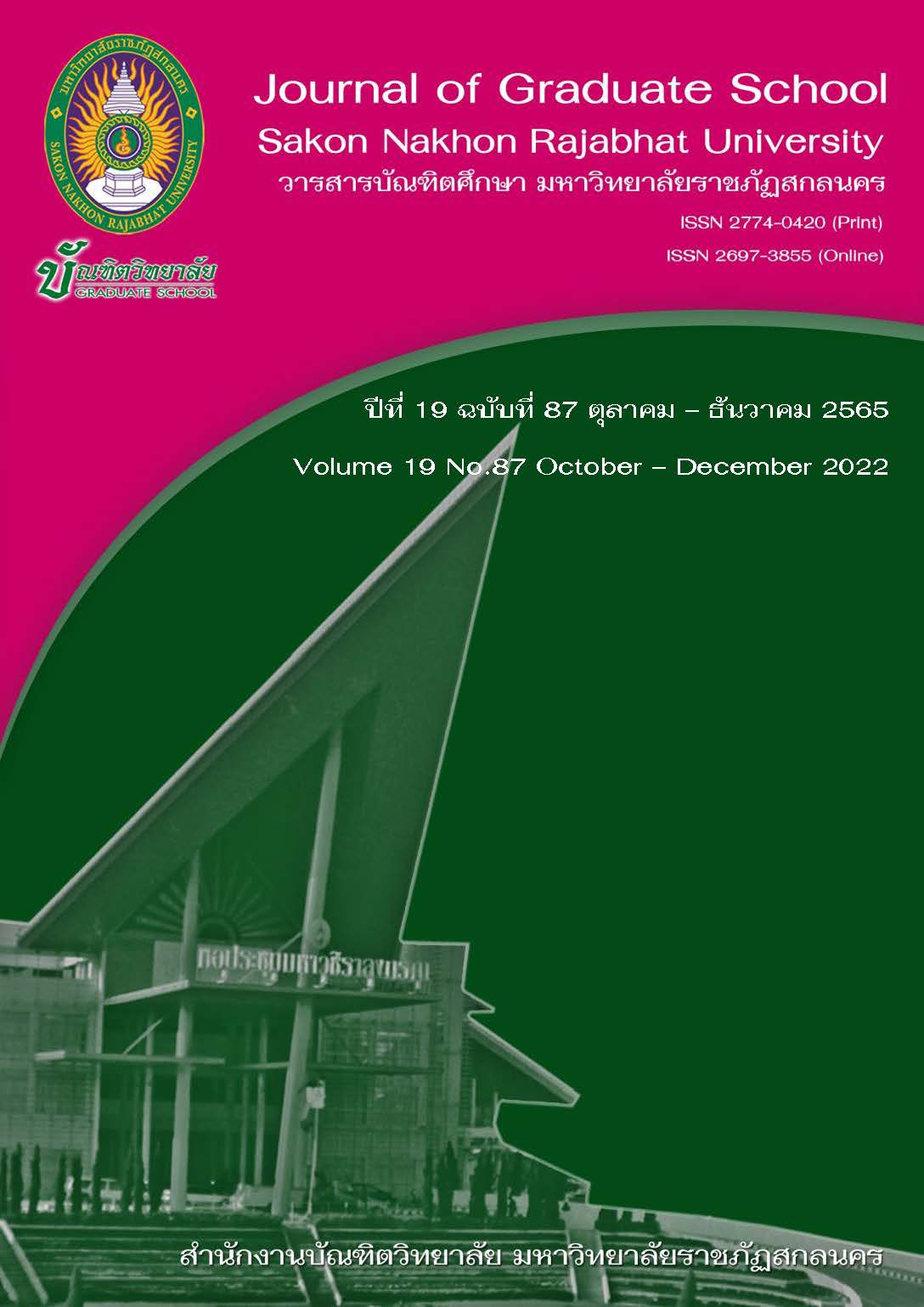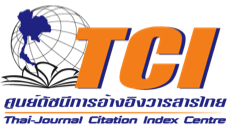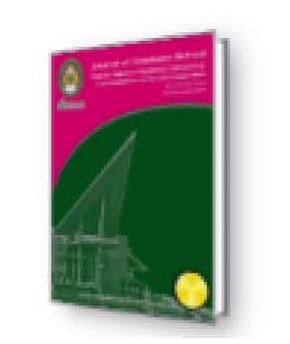การใช้แท็บเล็ตพัฒนาทักษะการอ่านคำที่ใช้ในชีวิตประจำวัน ของนักเรียนที่มีภาวะออทิสซึม ด้วยความร่วมมือของครูและผู้ปกครอง
Keywords:
Tablet-Based Device, Word Reading Skills for Daily Life Communication, Students with AutismAbstract
The purposes of this study were: 1) to identify the words needed for daily-life communication of students with autism, aged 7-18 years enrolled in the Ratchaburi Special Education Center, and 2) to study the results of using a tablet-based device to develop oral communication for the daily life of students with autism using a teacher-parent collaborative approach. Two males and one female student with autism who were diagnosed as autistic by the physician were selected through purposive sampling. The A-B-C single-subject design was used in this study. The research tools included a word surveying form, individualized implementation plans, and flashcards, with an index of item objective congruence (IOC) between the pictures and words of 0.93, and the inter-observer agreement (IOA) of 94.71%. Data were analyzed for both individuals and groups and presented by using a line graph.
The study results showed that: 1) These participants required 40 words for daily life communication, 2) The effects after using tablet-based devices to develop word reading skills for daily life communication of students with autism using teacher-parent collaboration in the baseline (A), =11.44 words: 28.61%, using flashcards by the teacher (B1),
= 29.22 words: 73.05%, using tablet-based devices by the teacher (B2),
= 37.89 words: 94.73% and using tablet-based devices by the parents (C), 38.44 words: 96.10%. After the intervention, the participants could speak clearly and communicate by using words appropriate to given situations.
References
จุฬาวิทยานุกรม. (2554). การสื่อสาร. เข้าถึงได้จาก http://www.chulapedia.chula.ac.th/index.php?title (Communication). 5 กรกฎาคม 2563.
ทวีศักดิ์ สิริรัตน์เรขา. (2555). คู่มือออทิสติก สำหรับผู้ปกครอง. (พิมพ์ครั้งที่ 5). กรุงเทพฯ: สำนักงานพระพุทธศาสนาแห่งชาติ.
ทวิช ตรีสูน และอัญชลี สารรัตนะ. (2562). การใช้แท็บเล็ตเพื่อพัฒนาการสื่อสารของนักเรียนที่มีภาวะออทิสซึมด้วยความร่วมมือของครูและผู้ปกครอง. วารสารวิจัยและพัฒนาการศึกษาพิเศษ, 8(2), 11-23.
บุญเรือง ตรีเรืองวรวัฒน์. (2560). การวิจัยเกี่ยวกับความผิดปกติของยีนออทิสติกสเปกตรัมและความชุก. เข้าถึงได้จาก https://www.dmh.go.th/news-dmh/view.asp?id=26705. 8 สิงหาคม 2563.
ประพฤทธิ์ จิตรรุ่งวิทยา. (2557). การพัฒนาสื่อการสอนทักษะการสื่อสารของเด็กออทิสติก. กรุงเทพฯ: มหาวิทยาลัยเทคโนโลยี พระจอมเกล้าพระนครเหนือ.
พร้อมพงศ์ เวทย์วิทยานุวัฒน์ และสุภาภรณ์ ตั้งดำเนินสวัสดิ์. (2561). การใช้แท็บเล็ตพีซีในการจัดการเรียนการสอนของครูประถมศึกษาชั้นปีที่ 1 จังหวัดเพชรบุรี. วารสารวิชาการบัณฑิตวิทยาลัยสวนดุสิต, 13(3), 216-225.
สุรศักด์ ปาเฮ. (2554). แทบเล็ตเพื่อการศึกษาโอกาสและความท้าทาย. เข้าถึงได้จาก http://www.kan1.go.th/tablet-for-education.pdf. 5 กรกฎาคม 2563.
สุพัตรา ปสังคโท. (2551). การฝึกการสื่อสารในชีวิตประจำวันของเด็กออทิสติก โดยใช้ป้ายกระดานสื่อสาร. วิทยานิพนธ์ ค.ม. มหาสารคาม: มหาวิทยาลัยราชภัฏมหาสารคาม.
อาพร ตรีสูน. (2550). ผลของการใช้ชุดการเรียนรู้ด้วยกลวิธีการรับรู้ผ่านการมองในการพัฒนาทักษะทางสังคมของนักเรียนออทิสติก. วิทยานิพนธ์ ศ.ม. ขอนแก่น: มหาวิทยาลัยขอนแก่น.
อัญชลี สารรัตนะ. (2562). การวิจัยเชิงทดลองแบบกลุ่มตัวอย่างเดี่ยว สำหรับหลักสูตรและการสอน. กรุงเทพฯ: สำนักพิมพ์จุฬาลงกรณ์มหาวิทยาลัย.
American Psychiatric Association. (2013). Autism spectrum disorder. Retrieved from http://www.psychiatry.org/DSM/APA_DSM-5-Autism-SpectrumDisorder%20(2).pdf. September 20th, 2020.
Hendricks, D. (2010). Employment and adults with autism spectrum disorders: Challenges and strategies for success. Journal of Vocational Rehabilitation, 32(2), 125-134.
Hodgdon, Linda. (2021). What are Visual Strategies for Autism?. Retrieved from https://usevisualstrategies.com/visual-strategies-autism/. September 20th, 2020.
Ruble, L. A., & Dalrymple, N.J. (2002). COMPASS: A parents-teacher collaborative model for students with autism. Focus on Autism& Other Developmental Disabilities, 17(2), 76-83.
Downloads
Published
How to Cite
Issue
Section
License
Copyright (c) 2023 Journal of Graduate School Sakon Nakhon Rajabhat University

This work is licensed under a Creative Commons Attribution-NonCommercial-NoDerivatives 4.0 International License.
บทความทุกบทความที่ตีพิมพ์ในวารสารบัณฑิตศึกษา มหาวิทยาลัยราชภัฏสกลนคร ถือว่าเป็นลิขสิทธิ์ของบัณฑิตวิทยาลัย มหาวิทยาลัยราชภัฏสกลนคร










